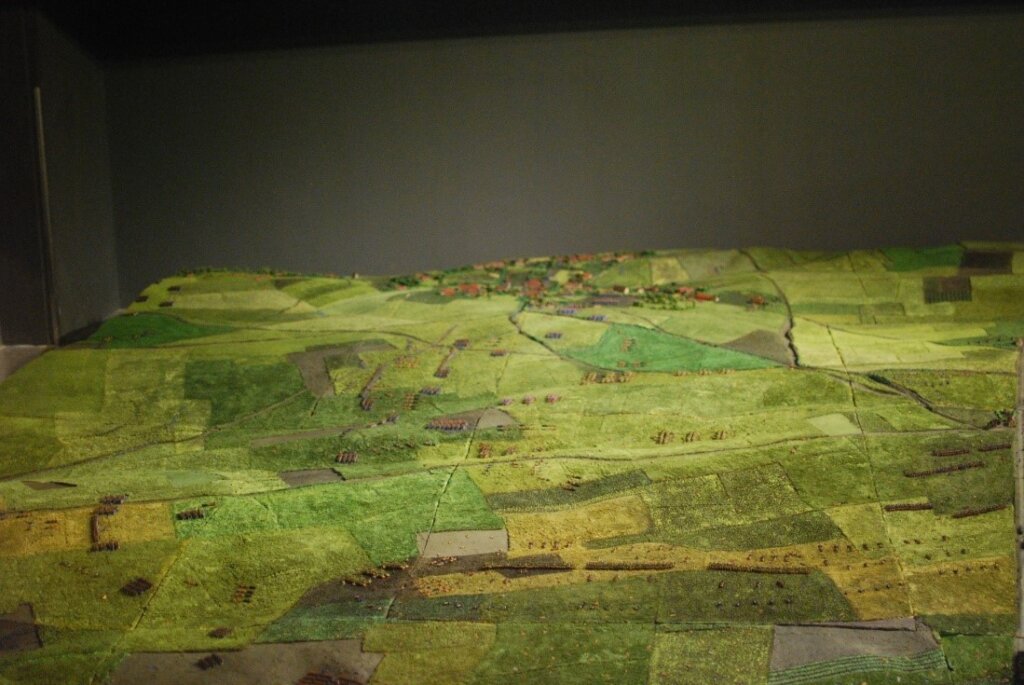
Wellington’s Smallest Victory
I’ve long been fascinated by the way in which the British claimed Waterloo as a British, rather than an Allied, victory – particularly as only a minority of the troops under Wellington’s command were actually British. The insistence that the British essentially pulled off victory on their own accounts for the way that the Prussian contribution is regularly dismissed. Nowadays we often read that the Prussians arrived late at the battle and that they had no effect until the very end. Some accounts even suggest that the final advance by the British would have taken place successfully whether or not the Prussians had been there.
This rewriting of history started on the evening of the battle when Wellington rejected Blucher’s suggestion that it be called the battle of La Belle Alliance (after the inn where Blucher and Wellington met at the end of the day), insisting instead that it be called Waterloo, after the town (not on the battlefield) where Wellington had set up his headquarters the night before the fighting started.
The most blatant rewriting of the Prussian involvement centred on a model of the battlefield created by William Siborne, a young army officer who was commissioned by the government to produce a large scale model as a permanent commemoration of Wellington’s victory. Siborne took his commission seriously, corresponding with hundreds of the officers who were at Waterloo, including Prussian officers and, although many were reluctant to discuss it, the French. As a result he was able to produce a picture of the battlefield representing the situation at 7.00pm, just after the fall of La Haye Sainte. Siborne considered that this was the crisis of the battle.
At this point, Prussian troops were already attacking the French in Plancenoit while others had linked up with Wellington’s left, enabling him to strengthen his centre. Hundreds of detailed models of Prussian soldiers were placed to reflect that. Yet if you look at the model today (it’s on display in the National Army Museum) these soldiers aren’t there. At the crisis of the battle, just before the decisive charge by Wellington’s troops, the French are faced only by the British. The Prussians, as so many people still believe, weren’t there. They arrived too late to have any decisive impact on the battle.

I love that model and I’ve visited it several times. I knew it misrepresented the Prussian position and I understood the politics behind it. But this Christmas I was given a copy of Peter Hofschroer’s wonderful book, Wellington’s Smallest Victory and now I know how the model came to be so inaccurate.
It’s a story of a naïve young man who set out to produce something that was to be both the historical record of a famous victory and a significant work of art in its own right. The project ran out of control, taking over his life, and he became quite obsessive about its accuracy. What he did not realise was that he was taking on the Duke of Wellington himself, who had no intention of allowing Siborne’s model ever to see the light of day with the Prussians in place.
It’s a story of a powerful man using money and position to crush somebody who threatened the image he had created for himself. Wellington, it is fair to say, does not come out of the story well.
Hofschroer’s book is incredibly detailed. Very occasionally it even verges on the boring with its accounts of exactly who corresponded with whom as the government tried to deprive Siborne of money owing to him. The detail is important, though, as Hofschroer is presenting a version of the battle of Waterloo which many people, after 200 years of propaganda, will find difficult to accept. He is also attacking the reputation of Wellington, somebody who was practically a demigod while Siborne was working on this model and who is still seen as one of the Great Britons of the 19th century.
The meticulous descriptions of exactly which troops were where helps the reader visualise exactly what was going on and will probably provide new insights even for those already very familiar with Waterloo. Hofschroer also extends the scope of his book to cover Wellington’s response to Prussian setbacks at Charlesroi and Ligny. Again, his account is detailed and convincing and does not show Wellington in a good light. Given how much time I spend reading accounts of Napoleonic battles, it’s worrying how much I struggle with many of these books, but Wellingtons Smallest Victory reads like a crime thriller. It’s gripping.
A Word from our Sponsor
There is a lot of detail about elements of the Battle of Waterloo Burke at Waterloo. (“A good general account of the battles described.” – Amazon review.) Burke at Waterloo is available on Kindle at a ludicrously cheap £3.99. If you enjoy my blog, you might consider buying it. mybook.to/BurkeWaterloo
It’s also available in paperback for £8.99.

